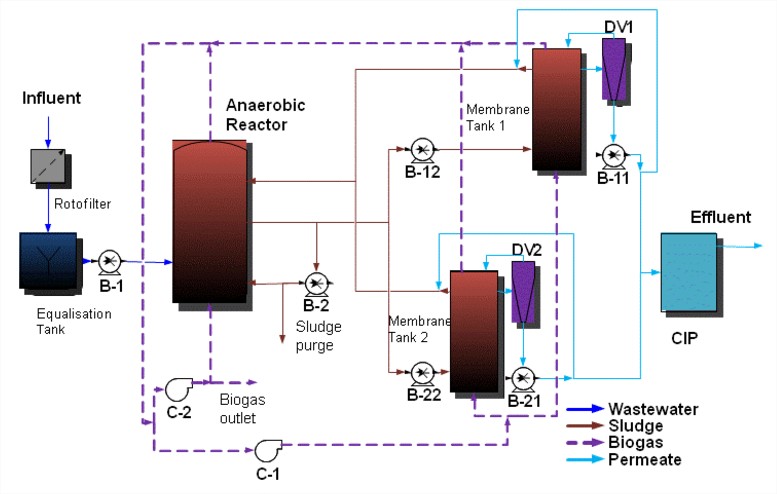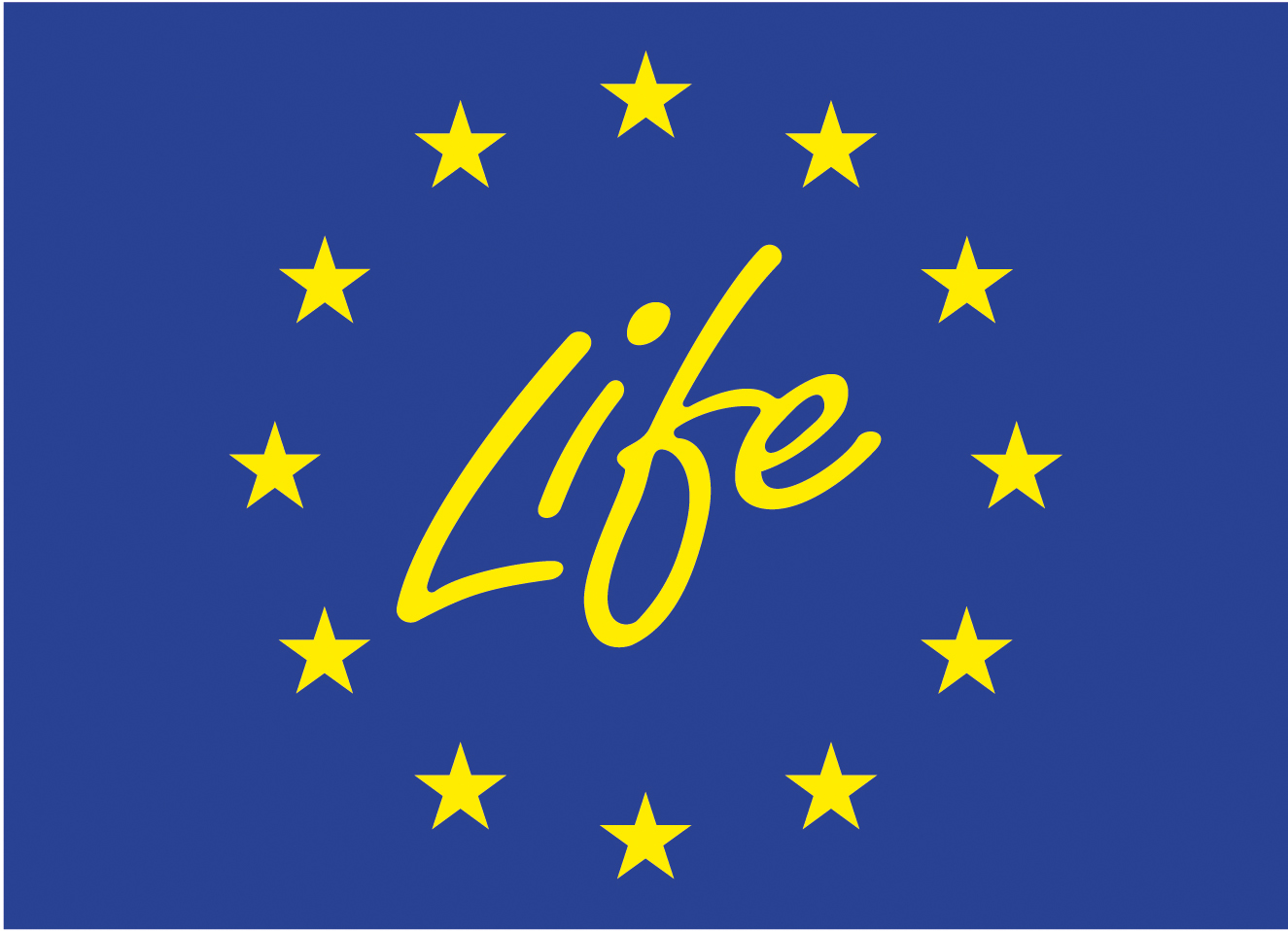Project
The LIFE MEMORY Project

In Europe, most municipal wastewater treatment plants (WWTPs) are equipped with conventional activated sludge (CAS) processes which consume considerable amounts of energy. More specifically, aeration can consume as much as 60% of total energy requirements of a WWTP. In the near future it is expected that costs related to wastewater treatment will rise due to stricter discharge limits for treated effluents and sludge disposal in order to comply with the EU Water Framework Directive (WFD). Such new restrictions represent a significant challenge in this field. Furthermore, new regulations on the mitigation of greenhouse gas emissions could penalize both excessive energy consumption and sludge production.
AnMBR technology: Moving towards sustainable watewater treatment
Within this context, the LIFE MEMORY Project aims to demonstrate at industrial prototype scale the technical and economical feasibility of an innovative technology, the submerged anaerobic membrane bioreactor (AnMBR), as an environmentally friendly alternative to conventional urban wastewater treatment processes.

AnMBR technology integrates anaerobic treatment and membrane ultrafiltration within a single step, providing a number of advantages. The anaerobic process transforms the organic matter contained in wastewater into a biogas stream mostly composed of methane and carbon dioxide. Bioenergy as heat and electricity can be harvested from the biogas produced to be used in the WWTP. Simultaneously, membrane ultrafiltration completely retain the microorganisms within the anaerobic reactor allowing the sludge retention time (SRT) to be increased by 100% without increasing bioreactor size or the hydraulic retention time (HRT).
Thanks to this feature, highly effective anaerobic transformation of low-strength wastewater can be accomplished. Moreover, anaerobic bacteria are characterized by a low yield which, combined with the long retention inside the reactor, ensure a considerable reduction in sludge production, generating less residues and emissions. Therefore, expected results of the LIFE MEMORY project are:
- Reduction of energy consumption per m3 of treated wastewater by 70%: compared to typical consumption ratios in WWTPs based on CAS process (0.25-0.6 kWh/m3) and aerobic MBR systems (0.50-2.5 kWh/m3), the proposed technology offers a sharp reduction in electricity consumption and the related carbon footprint.
- Reduction of CO2 emissions from the oxidation of organic matter by 80%, passing from (in CO2 equivalents) 2.4 kg CO2/kg COD eliminated to 1.4 kg CO2/kg COD eliminated; thus greatly decreasing the carbon footprint of the wastewater treatment plant.
- 25% less of space requirements of the facility, compared with CAS plants based on aerobic processes.
- Sludge production significantly reduced (down to 50% kg TSS/kg COD removed).
- Implementation of a protocol for the design and operation of WWTPs based on the innovative AnMBR technology.
The project will take place at the WWTP facility of Alcázar de San Juan (Ciudad Real, Spain), where it will be implemented the best configuration for wastewater treatment with an AnMBR.

During the Life Memory project, current and future regulatory frameworks for climate change (CO2, energy consumption) will be taken into account for their compliance and override. This will allow us to formulate challenging and relevant environmental impact goals that could be realized throughout the project.
In order to maintain the global warming under 2°C, which requires a global reduction of GHG emissions of 80-95% by 2050 for the developed countries, several International and European legislations and communications have been issued as guidelines for the different contributors to achieve this final objective:
- Kyoto Protocol to the United Nations Framework Convention on Climate Change.
- Council Decision concerning approval, on behalf of European Community, of the Kyoto Protocol.
- Directive 2003/87/EC of the European Parliament and of the Council of 13 october 2013.
- Treaty of Lisbon.
- Copenhagen Accord.
XXI century: From wastewater to Resource Source
Towards a new paradigm based on sustainability, where wastewater now turns into a source of energy, nutrients and simultaneously, a water resource suitable for reuse.
In this context, LIFE MEMORY project targets for the sustainable production of reusable water demonstrating the feasibility of an innovative technology: the Submerged Anaerobic Membrane Bioreactor (SAnMBR).




